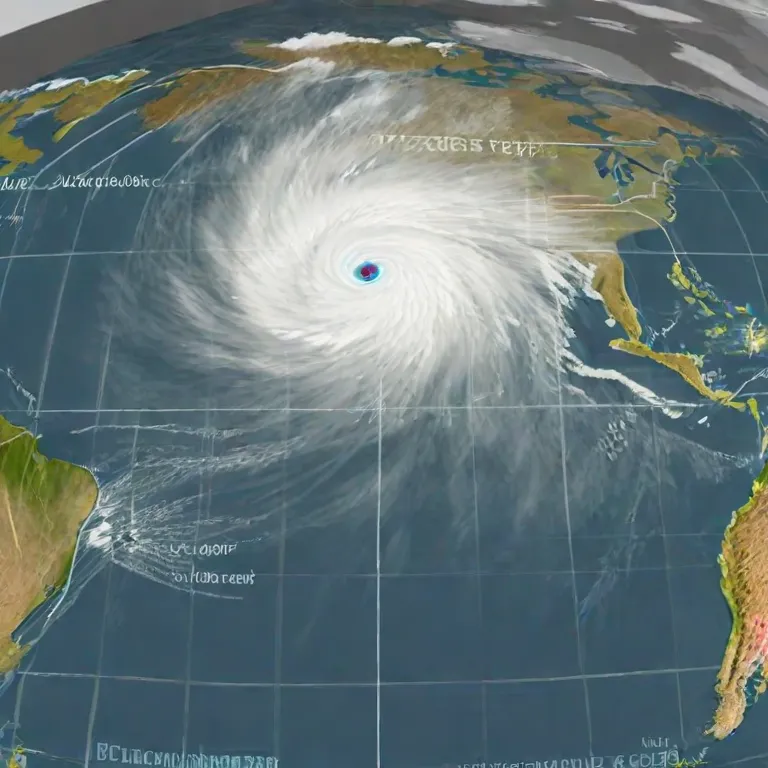
By Saeed Mirshekari
August 6, 2024


Access O'Mentors
Top Data Scientist Mentors from Fortune 500 Companies excited to help you out 1-on-1!
1️⃣ Explore freely
→
2️⃣ Apply confidently
→
3️⃣ Pay securely
→
4️⃣ Book instantly
Unraveling the Statistics of Hurricanes: Utilizing Data Analysis to Predict and Minimize Loss
Hurricanes, with their immense power and destructive potential, stand as one of nature's most formidable phenomena. These massive tropical cyclones can wreak havoc on coastal regions, causing catastrophic damage to infrastructure, economies, and lives. Understanding the statistics of hurricanes and harnessing data analysis techniques are paramount for predicting their trajectories, intensities, and impacts, ultimately aiding in mitigating loss and ensuring preparedness.
The Anatomy of Hurricanes
Hurricanes, also known as typhoons or cyclones depending on their location, are complex weather systems characterized by strong winds, heavy rainfall, and low atmospheric pressure. These tropical cyclones derive their energy from warm ocean waters and form over the tropical and subtropical regions.
Frequency and Distribution
Hurricanes occur worldwide but are most prevalent in certain regions:
- Atlantic Basin: The Atlantic hurricane season runs from June 1 to November 30, with an average of 12 named storms, six hurricanes, and three major hurricanes annually.
- Pacific Basin: The Pacific sees a higher frequency of hurricanes, with the East Pacific season running from May 15 to November 30 and the West Pacific season lasting year-round.
Classification and Intensity
Hurricanes are categorized based on their maximum sustained wind speeds using the Saffir-Simpson Hurricane Wind Scale:
- Category 1-5: Category 1 hurricanes have winds of 74-95 mph, while Category 5 hurricanes have winds exceeding 157 mph.
Unveiling the Causes of Hurricanes
Understanding the factors that contribute to hurricane formation and intensification is crucial for predicting their behavior and impacts.
Warm Ocean Waters
Hurricanes thrive on warm ocean waters, typically with temperatures above 80°F (27°C). The warm water evaporates, providing the energy needed for the storm's development.
Atmospheric Conditions
- Low Wind Shear: Hurricanes require low wind shear, which allows the storm to maintain its structure and intensify.
- Moisture: High levels of atmospheric moisture fuel the development of thunderstorms within the hurricane, sustaining its strength.
Coriolis Effect
The Coriolis effect, caused by the Earth's rotation, helps organize the cyclonic circulation of hurricanes. This effect is essential for their formation and maintenance.
Impacts of Hurricanes
Hurricanes unleash a barrage of destructive forces, leaving a trail of devastation in their wake. Their impacts span across multiple domains, affecting communities, economies, and ecosystems.
Human Impact
- Loss of Life: Hurricanes can result in fatalities due to storm surges, flooding, and high winds. For instance, Hurricane Katrina claimed over 1,800 lives in 2005.
- Injuries and Displacement: Survivors may suffer injuries from flying debris or flooding, leading to displacement and homelessness.
Economic Impact
- Infrastructure Damage: Hurricanes cause extensive damage to buildings, roads, power lines, and other infrastructure, resulting in billions of dollars in repair costs.
- Business Disruption: The disruption of businesses due to property damage, power outages, and supply chain disruptions leads to economic losses.
Environmental Impact
- Ecosystem Destruction: Hurricanes can devastate coastal ecosystems, including mangroves, coral reefs, and wetlands, disrupting habitats and biodiversity.
- Water Pollution: Storm surges and flooding can lead to the contamination of water sources, posing risks to human health and aquatic ecosystems.
Leveraging Data Analysis for Prediction and Preparedness
Data analysis plays a pivotal role in understanding and predicting hurricane behavior, guiding preparedness efforts and minimizing loss.
Historical Data Analysis
Analyzing historical hurricane data provides insights into trends, variability, and potential future scenarios:
- Trend Identification: Long-term data analysis helps identify trends in hurricane frequency, intensity, and landfall patterns.
- Risk Assessment: Assessing historical impacts helps communities understand their vulnerability and prepare accordingly.
Real-Time Monitoring and Forecasting
Advanced monitoring systems and forecasting models enable real-time tracking and prediction of hurricane trajectories and intensities:
- Satellite Technology: Satellite imagery provides valuable data on hurricane formation, movement, and intensity, facilitating early detection and warning.
- Numerical Weather Prediction (NWP): NWP models simulate atmospheric processes to forecast hurricane tracks and intensities, aiding in evacuation and preparedness efforts.
Risk Modeling and Simulation
Risk modeling tools use data analysis techniques to assess potential hurricane impacts and inform risk mitigation strategies:
- Storm Surge Modeling: Models simulate storm surge heights and inundation areas, helping coastal communities plan for and mitigate surge-related risks.
- Wind Damage Assessment: Wind damage models estimate the likelihood and severity of structural damage due to hurricane-force winds, guiding building codes and infrastructure design.
Early Warning Systems
Effective early warning systems provide timely alerts and guidance to communities at risk:
- Emergency Alerts: Automated systems disseminate warnings via mobile phones, sirens, and other channels, ensuring that residents receive timely information.
- Evacuation Planning: Early warnings enable orderly evacuation of vulnerable areas, reducing the risk of loss of life and property.
Case Study: Hurricane Katrina
Hurricane Katrina, one of the most devastating hurricanes in U.S. history, underscores the importance of data analysis and preparedness:
- Forecast Accuracy: While forecasters accurately predicted Katrina's track, the intensity forecast underestimated the storm's strength, highlighting the need for continued improvement in intensity forecasting.
- Emergency Response: The delayed and inadequate emergency response to Katrina's aftermath exposed weaknesses in disaster preparedness and response systems, emphasizing the importance of effective planning and coordination.
Challenges and Future Directions
Despite advancements in data analysis and forecasting, challenges persist in accurately predicting and mitigating hurricane impacts:
- Climate Change: Climate change is expected to alter hurricane patterns and intensities, posing new challenges for prediction and preparedness.
- Data Quality and Availability: Ensuring the availability and quality of data, particularly in data-sparse regions, remains a challenge for accurate forecasting.
Conclusion
Hurricanes represent a formidable threat to coastal regions worldwide, with the potential for devastating impacts on communities, economies, and ecosystems. By harnessing the power of data analysis, meteorologists can improve hurricane prediction, enhance preparedness efforts, and minimize loss of life and property. From historical data analysis to real-time monitoring and risk modeling, data-driven approaches are essential for building resilient communities and safeguarding against the impacts of these powerful storms. As technology and scientific understanding continue to evolve, so too will our ability to predict, prepare for, and mitigate the impacts of hurricanes, ensuring a safer and more resilient future for coastal communities around the world.

Saeed Mirshekari
Saeed is currently a Director of Data Science in Mastercard and the Founder / Director of OFallon Labs LLC. He is a former research scholar at LIGO team (Physics Nobel Prize of 2017).